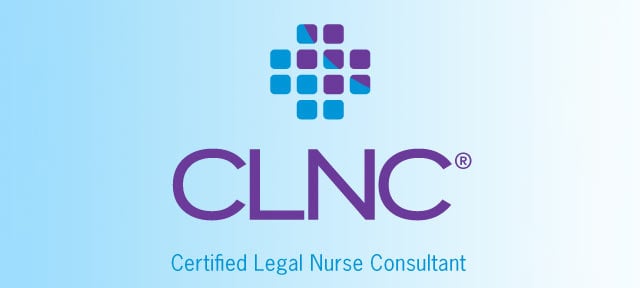Today I’m sharing one of my favorite excerpts from my book Wicked Success Is Inside Every Woman. Every time I read this excerpt I laugh and am instantly transported back to Kyoto.
Imagine yourself sitting in a Japanese-style kneeling position on a hard wooden bench in an 800-year-old Buddhist temple in Kyoto, Japan, trying to empty your mind in a breathing, open-eyed meditation. Your eyes are focused in the middle distance, seeing all and seeing nothing. The soft smell of pine and burning incense fills the air, and all around is quiet.
At that almost perfect moment only one thing stands between you and satori, perfect enlightenment—well two, if you count the prickly feeling of your legs falling asleep. That one thing is a smiling, bald monk in a dark brown robe standing in front of you wielding a three-foot-long stick over his head. His benign smile doesn’t fool you, because it belies the fact that he is about to whack you with the stick.
Let me start at the beginning. I’ve always felt I was pretty good with focus. After all, I worked as a nurse in critical care. Nurses are used to working in an environment where the world around us is going haywire—people running left and right, procedures being done, orders being given (or shouted)—where lives hang in the balance while we concentrate on the task at hand. We intubate, defibrillate and resuscitate without a second thought. Total focus!
How about you? Are you really focused, or do you sometimes sleepwalk through engagement? While in an important meeting you make a note to yourself to pick up diapers for the baby, or construct your Saturday honey-do list. In the first meeting you ever attended, you were totally focused on every word, and probably apologized if you sneezed. Then maybe you moved from doing your job with focus to doing it subconsciously, maybe even unconsciously.
Can we truly focus while the past and future intrude upon our thoughts? Are we fully present or merely idling through the motions while our minds traipse away to other thoughts? Are we giving our families, spouses, bosses and clients the benefit of our full attention, or are we cheating them of our wholehearted engagement?
Back to Japan: I had come to this ancient Zen Buddhist temple in Kyoto for expert advice, to sharpen my ability to focus. The purpose of meditating with open eyes was to allow the Roshi, or senior monk, to look in the eyes of his students as he walked the room, to see who was focused and who was sleeping or daydreaming.
Now, for me, there’s a short distance between meditating and napping. I also find myself following thoughts down rabbit holes instead of discarding or ignoring them when I meditate, so I was anxious for some instruction from a master. This exercise was designed to train us to stay grounded in the present.
My husband Tom and I, along with a visiting monk from another temple, sat in audience while the Roshi talked about meditation techniques. He was funny and self-deprecating, and I immediately liked him. During breathing meditation, he explained, we would observe our thoughts from outside, like watching a river. We were to count our breaths in and out. Our goal was to reach 10 breaths without having a thought other than the count. If a random (or purposeful) thought intruded, we were to recognize it and start over at one. I asked the visiting monk next to me if he ever made it all the way to 10. He nodded. “Of course, many times. Once your mind is clear it is quite simple.”
The Roshi explained that to start the zazen session he would light an incense stick and strike a small gong. Then we’d meditate for the period of time it would take for the stick to burn through. Afterward, he’d strike the gong again, to remind us to return to the present. We settled in and I was ready to leap into the meditation. I heard him strike the match and ring the gong, and there I went, my eyes focused in the empty space halfway to the large seated Buddha figure in the front of the room. Like everything I do, I was “all in.”
One breath, in and out; so far so good. Two breaths, in and out; going well. Three breaths, in and—was that Tom rustling around? Darn. One, in and out. Two, in . . . and so on. When the gong finally rang I’d never gotten past a count of four. The Roshi told me that was excellent for the first time. The visiting monk flashed me a quick smile, so I knew he’d probably gotten to 10 effortlessly.
The Roshi then asked if we’d like to do it for real. “For real?” I asked. “Wasn’t that for real?” “No,” he clarified. “It is easy to focus when you are alone with your thoughts in a temple such as this. But when there are outside influences present, it is not so easy.”
This is when the three-foot-long willow pole appeared. He pulled it out and explained that during the next meditation he would walk around the room observing each student as we meditated. If he felt that our focus was wandering, he would stop in front of us. At that point, we were to bow and thank him. Then he would strike us on each shoulder to remind us to focus.
This is the goofiest thing I’ve ever heard of, I thought. How can getting whacked help you focus? I asked the visiting monk if it hurt. “That depends on you,” he said, then winked and added, “Whacking does help one to clear the mind . . . after it stops stinging.” Great, I thought. Too bad this guy’s not old and frail. I just hope he’s not trigger-happy.
Then came the test. Ever ready for a challenge, and buoyed by my past success of four breaths, I was prepared. I heard the match strike, followed by the sound of the gong. I brought my focus to center. One breath, in and out. Two breaths, in and out. In the corner of my vision appeared a bald, five-foot-six man in gray robes and slippers tiptoeing around the room and brandishing a stick like a baseball bat. Alex Rodriguez in his pinstriped Yankee’s uniform holding a Louisville Slugger would have been less obvious.
The Roshi slowly crossed my field of vision, moving left to right in front of us. My eyes stayed centered and unfocused. One breath, in and out. Two breaths, in and out. Three—is that Tom giggling? Is that me giggling? I struggled to stifle myself, but it was like laughing in church with my twin, Vince, back when we were 5, only this time instead of a nun with a ruler there stood a monk with a great overhand swing waiting for me.
One breath, in and out. Back in control. Suddenly I glimpsed a movement to my right and sensed the monk next to me, bowing. Then WHACK! a pause and WHACK! followed by silence. The monk beside me had obviously failed in his focus. I tensed and wasn’t present-focused either; my thoughts strayed to the future and whether I was next to be whacked. The visiting monk’s failure at reaching serenity was affecting my own attempts. One breath, in and out. The Roshi passed by me moving to the left. One breath, in and out, again. Two breaths, in and out. Focus inside, focus inside.
I sensed movement to my left, then WHACK! It had to be Tom’s left shoulder—seemed even louder than before. Was that a whimper? WHACK! Tom’s right shoulder. Suddenly I was fully focused, not inside as I should be, but on the future. I was thinking “I’m so out of here. I am not staying around for this.”
My awareness immediately snapped to the present and there he was: the Roshi and his stick. Talk about fight or flight. I couldn’t very well punch a man whose life was dedicated to peace and nonviolence. Flight wasn’t an option either—after all, I’d come here specifically to learn how to meditate. It wouldn’t do to kick him in the shins and run screaming out of the temple with a horde of angry monks (like a bad chopsocky movie) chasing me to the nearest Starbucks for a calming cup of healthy green tea.
I remembered I was expected to bring my hands up and bow to the Roshi, in thanks for two things: first, for bringing to my attention the fact that I wasn’t focused, and second, for the reminder to focus more thoughtfully. I bowed my head and then my body to the inevitable. WHACK! It stung like the dickens. WHACK! Okay, okay, it only stung for a minute.
I bowed again to the Roshi and resumed my open-eyed meditation. It was easy to find the middle distance when my eyes were full of water. One breath, in and out. Two breaths, in and out.
Pema Chödrön teaches, pain is inevitable; it is suffering that’s optional. The pain of the stick came and went. Sure, I could have focused on the past and held a grudge. Or I could have focused on the future and worried about whether the Roshi would have time to circle the room again before that darn incense stick burned out. That’s the optional suffering, the wandering around in the wilderness of our thoughts. Instead, I focused on the present. Where I was and what I was supposed to be doing: meditating. I was learning a simple lesson taught the same way for hundreds of years.
Focus is important in our communications, too. After listening to a woman I was mentoring ramble aimlessly for three minutes, I politely stopped her: “I would really like to help you solve your issue, but would you please describe the issue?” After a few more attempts, still rambling, and more nudging by me to focus, she finally got to the heart of the matter and we dealt with it easily and swiftly.
As we were about to wrap up, she confessed that she still found it uncomfortable and often unsuccessful to talk to prospective clients. I knew the source of her problem. I had just lived it! It was her rambling method of communication.
People who know me, know that I tell it like it is. Businesspeople are crazy busy. They’re working for a living. They’re not like patients who lie around in bed with lots of time to spare, waiting for the next visit from their favorite nurse, happy for any company other than a bad reality show.
Focus is one of the essential keys to successfully communicating. Whether you’re talking to your boss or a prospective client, you have to focus, focus and focus more. You cannot go into an interview or meeting unprepared or misdirected. Once you lose that person, you lose the opportunity.
When things are blowing up around you, you may need to give yourself a whacking to get it under control. Think back to that monk and remember to keep your focus in the present. Focus on what you can do now and on what you are doing now. Whether you are alone or with someone else, whack all distractions aside. By keeping your thoughts on what you can do now—not what you might do, hope to do or didn’t do—you’ll be the calm in the center of any storm.
I’m not sure how long I’ll retain this precious gift. But as long as I’m here in the present, I’m going to put my all into being here, so I can engage big.
Success Is Inside!
P.S. Comment and share whether you could benefit from a good whacking.









Hi Vickie,
I recall when you first told the story of a good whacking! I just re-read your blog and it reminded me of the need to stay focused. Too often in my daily CLNC® practice is it easy to become distracted by phone calls or emails generated by “desparate info-seeking attorneys” or their support staff. So, what is a successful CLNC® consultant to do if a pressing deadline is at hand and intense focus is required? These 4 steps have helped me to minimize giving myself a good whack! 1) Turn the volume off on the answering machine and cell phone. 2) Set Outlook to an auto reply, assuring senders a response will be received when you return. 3) Commit to stretching breaks every hour. 4) Screen emails to prioritize your response every 3 hours. When I commit to these steps, I stay extremely focused, complete the deadline ahead of schedule ( always a bonus to maintaining a life long attorney-client) and confirm my passion ! Thank you Vickie for the refreshing reminders that propel my success, commitment and passion!
Your lifelong student and fan,
Suzanne
Suzanne, I’m a fan of your CLNC® success. Thanks for sharing your tips.